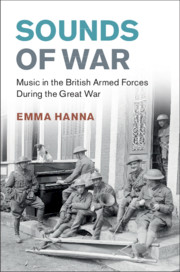Book contents
- Sounds of War
- Studies in the Social and Cultural History of Modern Warfare
- Sounds of War
- Copyright page
- Dedication
- Contents
- Figures
- Acknowledgements
- Abbreviations
- Introduction
- 1 Music in Britain, 1914
- 2 Recruitment and Fundraising
- 3 Instruments of War
- 4 Songs, Identity and Morale
- 5 Captivity
- 6 Religion and Pastoral Care
- 7 Medicine and Therapy
- 8 The Gramophone
- 9 Civilian Concert Parties
- 10 Servicemen’s Concert Parties
- 11 After the Armistice
- Conclusion
- Notes
- Sources and Select Bibliography
- Index
11 - After the Armistice
Published online by Cambridge University Press: 20 February 2020
- Sounds of War
- Studies in the Social and Cultural History of Modern Warfare
- Sounds of War
- Copyright page
- Dedication
- Contents
- Figures
- Acknowledgements
- Abbreviations
- Introduction
- 1 Music in Britain, 1914
- 2 Recruitment and Fundraising
- 3 Instruments of War
- 4 Songs, Identity and Morale
- 5 Captivity
- 6 Religion and Pastoral Care
- 7 Medicine and Therapy
- 8 The Gramophone
- 9 Civilian Concert Parties
- 10 Servicemen’s Concert Parties
- 11 After the Armistice
- Conclusion
- Notes
- Sources and Select Bibliography
- Index
Summary
Explains what happens to military music in the aftermath of the Great War. Briefly explains the establishment of the RAF Music School by Henry Walford Davies in 1918, and goes on to explain what happened to various organisations and individuals who have featured in the book. This chapter also features the role of music in remembrance, particularly in the first Festivals of Remembrance, 1923-27.
Keywords
- Type
- Chapter
- Information
- Sounds of WarMusic in the British Armed Forces during the Great War, pp. 232 - 240Publisher: Cambridge University PressPrint publication year: 2020

